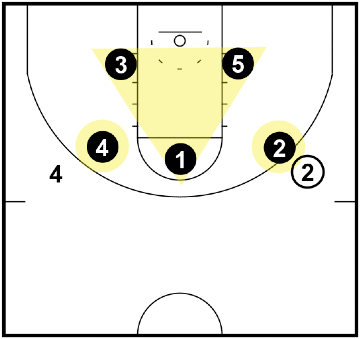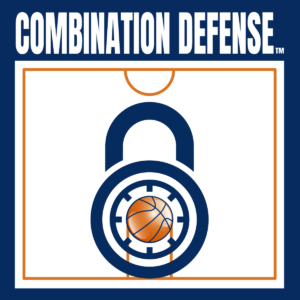Developing basketball defensive systems stands as one of the most important aspects for any coach out there. While designing offensive plays might be more fun, crafting the right defensive system might make more a difference between winning and losing. A good defense feeds directly into offense and it makes scoring that much easier. Basketball coaches implementing combination defenses, like the Triangle and 2 defense, can make things even more difficult for opponents.
Many coaches believe it’s better to sport a simple offense and complex defense, rather than the other way around. How a coach crafts their team’s defensive approach often dictates the very identity of the team. Also, not all players, particularly at the youth level, will have the same natural abilities on the offensive end, but most players can be taught complex defensive schemes and excel.
What is the Triangle and 2 Defense?
The Triangle and 2 defense stands as an innovative defensive strategy for implementation by basketball coaches. This combination defense seeks to limit the scoring opportunities for the offensive team’s top perimeter players. A variation of the Box and 1, the Triangle and 2 defense combines zone and man-to-man concepts in an effort to neutralize the opposing team’s scoring wings.
The biggest advantage of implementing the Triangle and 2 is the disruptive nature of the defense. Offenses that rely heavily on one or two players to create scoring opportunities remain particularly susceptible to this strategy. Also, opposing teams that incorporate specific timing and flow in their offenses sets find this defense frustrating to navigate. That said, this defense can be neutralized by opposing offenses built around talented low-post scorers.
Implementing the Triangle and 2 Defense
 The Triangle and 2 defense uses a combination of zone and man-to-man principles in its setup. This defense is designed specifically to frustrate the best perimeter players on any offense. It leverages the alignment to force other offensive players to take key shots for the opposing team.
The Triangle and 2 defense uses a combination of zone and man-to-man principles in its setup. This defense is designed specifically to frustrate the best perimeter players on any offense. It leverages the alignment to force other offensive players to take key shots for the opposing team.
But there are weaknesses that can be exploited, beyond post touches. Offenses that shoot well from behind the three-point line find additional space on the perimeter against this defense. Also, because of the specific nature of this alignment, the middle of the zone tends to be a weaker point. The Diamond and 1 defense works better to help neutralize shooters..
Using this type of defense can often catch an opposing team off guard, especially during the first meeting of the season. Most basketball coaches prepare their offenses to deal with man-to-man or zone defenses, often forgetting to add prep time for what some consider a “junk” defense.
Implementing the Triangle and 2 defense leans on defensive principles already established in other base defenses. Coaches find this defense relatively easy to implement thanks to the simple and straightforward nature of the responsibilities. The chasers play man-to-man, often in an aggressive, ball-denial fashion. The other defenders then create the zone to protect the rest of the floor.
Points of emphasis for this defense include securing the rebound to limit second-chance opportunities, and collapsing to the triangle when star players touch the ball. The zone defenders must be in position to both rebound and provide help when necessary.
Learn the Combination Defense to beat the BEST team on your Schedule!
Go to COMBINATIONDEFENSE.com now for all your coaching needs.
This innovation defensive coaching lesson includes everything a coach needs to implement these game-changing strategies.
Among the combo defenses dissected in this lesson are the Box and 1, the Triangle and 2, the Diamond and 1.
Content includes:
- Engaging Video Lessons
- Drills and Implementation Practices
- Q & A
- Bonus sections features – Offenses vs Combo Defenses, Tracking and Possession Charts
Related: 3 Great Defensive Drills to Improve Help and Rotation
Resource:
The Coach Unplugged Podcast
Ep 1406 Office Hours and Combination Defenses
If you found this useful, don’t forget to check out additional blog posts at TeachHoops.com. Also, check out TeachHoops on Facebook, Twitter, Instagram and YouTube.







